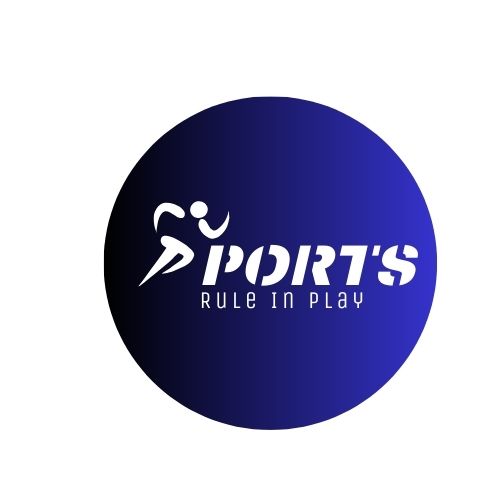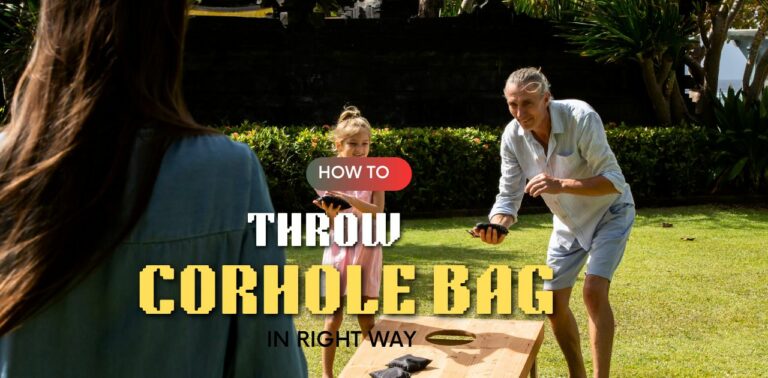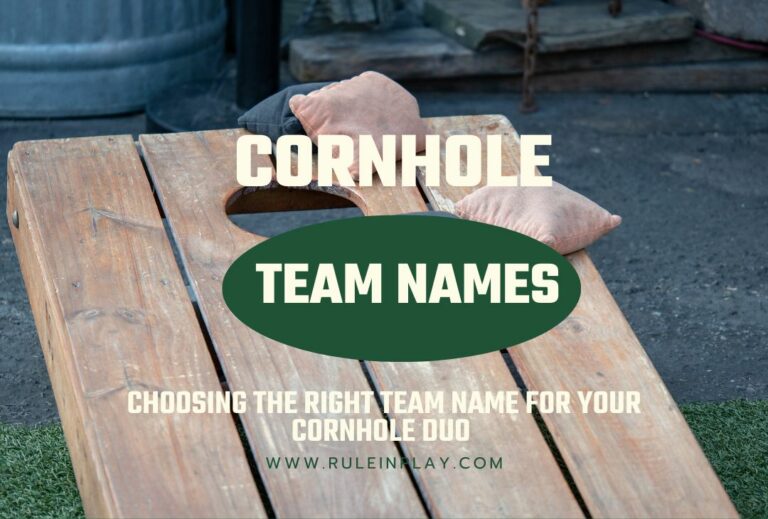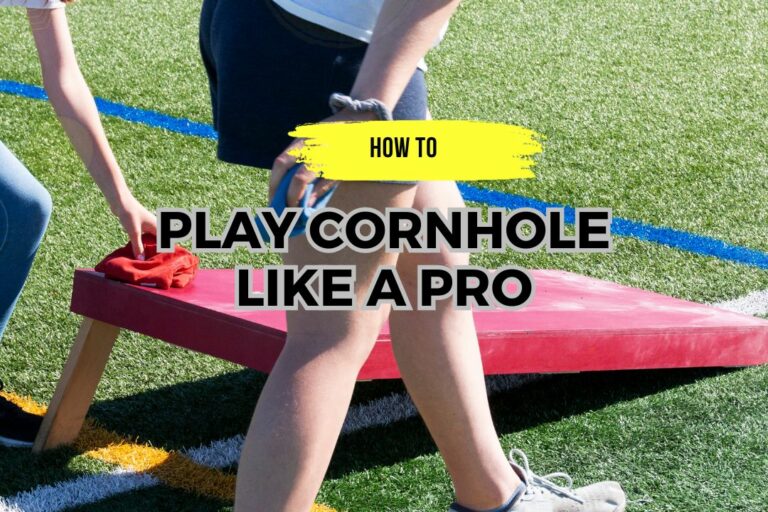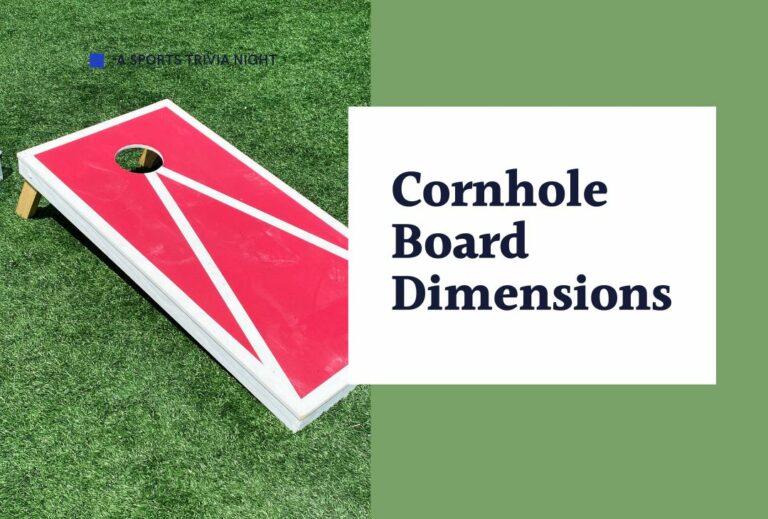Cornhole Court Dimensions: Setup a perfect court in 2023
Cornhole, a popular backyard game, has been bringing friends and families together for decades. Whether you’re a seasoned player or new to the game, understanding the proper cornhole court dimensions is crucial for a fair and enjoyable match. In this comprehensive guide, we will delve into cornhole court dimensions, board measurements, regulations, and everything you need to know to set up the perfect game.
The Basics of Cornhole
Before we dive into the specifics of cornhole court dimensions, let’s briefly go over the basics of the game. It involves throwing bean bags, usually filled with corn kernels, at a raised platform with a hole in it.
Each player or team takes turns throwing their bean bags from a set distance, aiming to get them through the hole or as close to it as possible. Points are scored based on where the bags land, and the team with the most points at the end of the game wins.
Cornhole Court Dimensions
To ensure a fair and competitive game of cornhole, it’s essential to adhere to the proper cornhole court dimensions. The official regulations for cornhole court dimensions are established by various governing bodies, such as the American Cornhole Association (ACA) and the World Cornhole Organization (WCO). These dimensions are designed to standardize the game and create a level playing field for all participants.
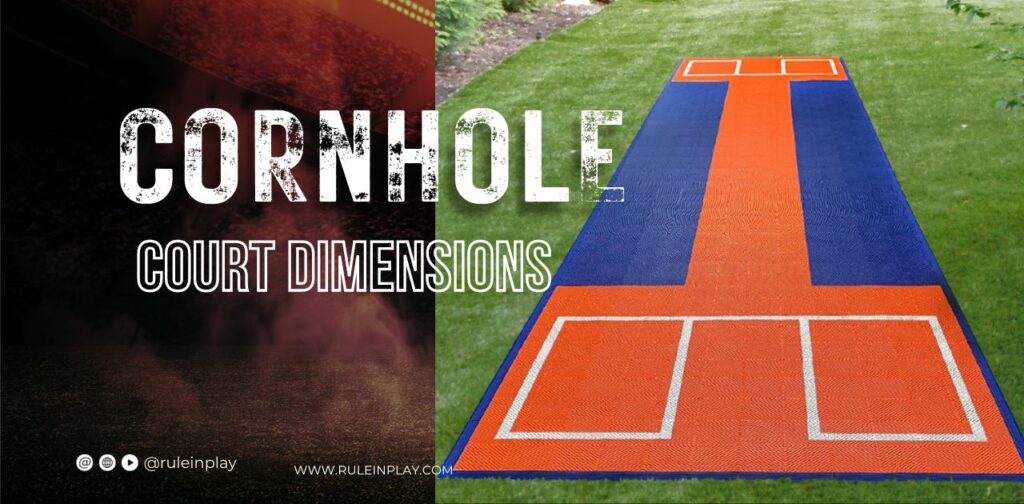
Standard Cornhole Court Dimensions
The standard cornhole court dimensions, as specified by the ACA, are as follows:
Variations in Cornhole Court Dimensions
While the standard cornhole court dimensions set by the ACA are widely accepted and used in official tournaments, there may be some variations in casual or recreational play. Players may choose to adjust the distance between the boards to suit their preferences or available space. However, it’s essential to maintain the square shape and ensure that both boards are equidistant from the starting line.
Cornhole Board Measurements
Understanding the dimensions of the cornhole boards themselves is crucial for setting up a proper game. The official cornhole board measurements, as specified by the ACA and most other governing bodies, are as follows:
These measurements are designed to provide consistency in the game, ensuring that all players are competing on a level playing field. It’s important to note that deviations from these dimensions can affect the difficulty and fairness of the game.
Cornhole Regulation Court Size
The regulation court size for cornhole, as previously mentioned, consists of specific dimensions for board placement, board-to-board distance, and pitching boxes. These regulations are in place to maintain consistency and fairness in competitive play. When setting up a regulation cornhole court, be sure to adhere to the following specifications:
By adhering to these regulation court dimensions, you can enjoy a competitive and standardized game of cornhole, whether you’re playing in an official tournament or among friends in your backyard.
Cornhole Pitch Dimensions
The term “pitch dimensions” in cornhole typically refers to the distance between the two cornhole boards, which is also known as the pitching distance. The pitching distance is a critical aspect of cornhole gameplay, as it directly affects the difficulty of making successful throws. The standard pitching distance is 27 feet, as specified by the ACA and other governing bodies.
Importance of Pitch Dimensions
The 27-foot pitching distance is carefully chosen to provide a fair and challenging playing field for participants of all skill levels. Here are some key points regarding pitch dimensions:
Cornhole Game Area Specifications
To create the perfect cornhole game area, it’s not just about the court dimensions but also the surrounding space and setup. Here are some important specifications for the overall game area:
By paying attention to these game area specifications in addition to cornhole court dimensions, you can create an enjoyable and organized playing environment for everyone involved.
Official Cornhole Playing Field Size
The official cornhole playing field size is determined by the standardized court dimensions and pitch dimensions, as outlined by governing bodies like the ACA and WCO. Adhering to these official playing field size guidelines ensures that you’re playing the game as it was intended to be played.
The Official Playing Field
In summary, the official cornhole playing field size includes the following key dimensions:
By following these official playing field size specifications, you can enjoy a game of cornhole that adheres to established standards and ensures fairness and competitiveness.
Cornhole Setup: A Step-by-Step Guide
Now that we’ve covered cornhole court dimensions and related specifications, let’s walk through the step-by-step process of setting up a cornhole game. Whether you’re hosting a backyard gathering, a friendly competition, or an official tournament, proper setup is essential for a great cornhole experience.
Step 1: Gather Equipment
Before setting up the cornhole court, make sure you have all the necessary equipment:
- Two cornhole boards with the correct dimensions (48 inches by 24 inches).
- Eight bean bags (four for each team) filled with corn kernels or other suitable material.
- Measuring tape to ensure accurate court dimensions.
- A level to ensure the playing surface is even.
- Scorecards or a scoreboard to keep track of points.
- Optional: lighting for nighttime play, seating for players and spectators.
Step 2: Choose the Playing Surface
Select a suitable playing surface for your cornhole game. Popular choices include grass, sand, gravel, or wooden decks. Ensure that the surface is level and free from any obstacles that could interfere with gameplay.
Step 3: Set Up the Boards
Position the two cornhole boards so that they meet the standard cornhole court dimensions:
- Place the boards 27 feet apart, measured horizontally from the front edge of each board. This is the pitching distance.
- Check that the boards are aligned diagonally, with a measurement of 33 feet from the front edge of one board to the front edge of the other. This ensures a square playing field.
- Ensure that the front edges of the boards are aligned with the front edge of each player’s pitching box.
Step 4: Mark the Pitching Boxes
Each player or team has a designated pitching box. Use chalk or tape to mark the pitching boxes on the playing surface. The pitching boxes should measure 4 feet by 3 feet and be positioned 27 feet from the front edge of the respective cornhole board.
Step 5: Set Up Scoring
Prepare a scoring system to keep track of points. You can use scorecards, a chalkboard, or a digital scoreboard. Make sure all players understand the scoring rules and how to keep score accurately.
Step 6: Place Bean Bags
Each team has four bean bags, usually in two different colors. Place four bean bags in one pitching box and the other four in the opposing team’s pitching box. Players will take turns throwing their bean bags towards the opposite board.
Step 7: Determine Starting Team
To decide which team goes first, you can use a coin toss, a “rock-paper-scissors” game, or any other fair method.
Step 8: Start Playing
With the court set up and equipment ready, you can begin playing cornhole following the standard rules and regulations. Each player or team takes turns tossing bean bags towards the opposing board, aiming to score points by landing the bags on the board or through the hole.
Wrapping Up
Cornhole is a fantastic outdoor game that can provide hours of entertainment for players of all ages. To ensure a fair and enjoyable experience, it’s essential to understand and adhere to the proper cornhole court dimensions, board measurements, and regulations. Whether you’re playing casually in your backyard or participating in an official tournament, following these guidelines will help create a level playing field and make your cornhole games a blast for everyone involved. So, gather your equipment, set up the court, and let the fun and competition begin!
